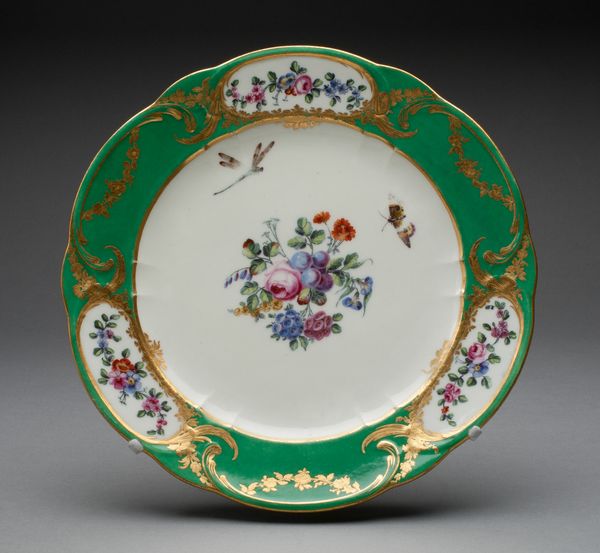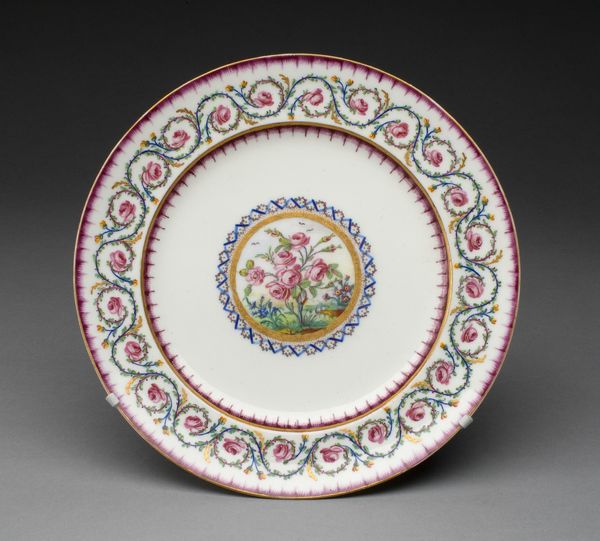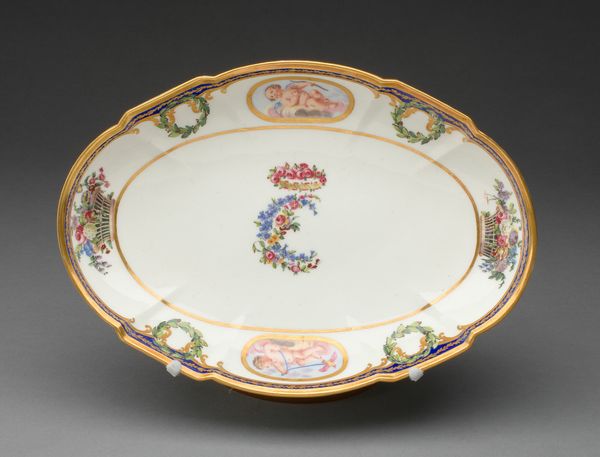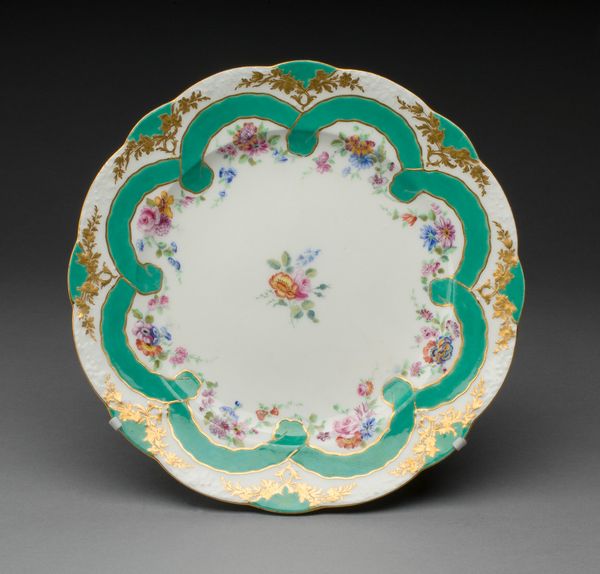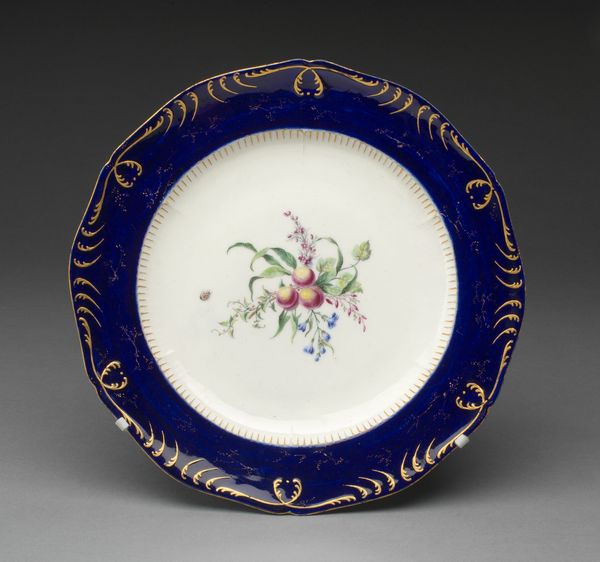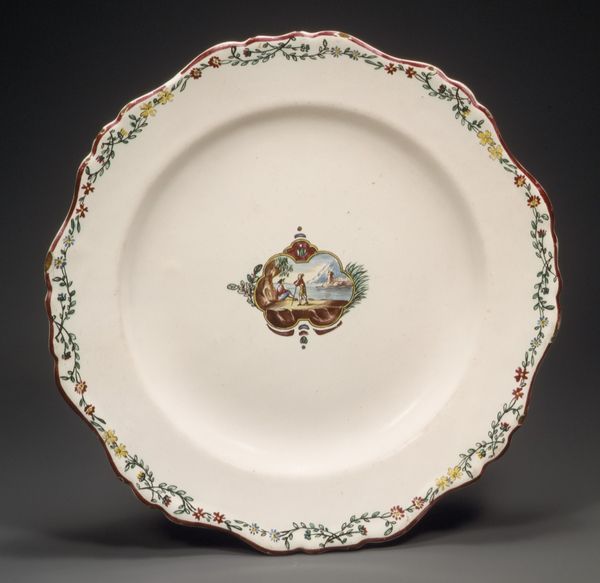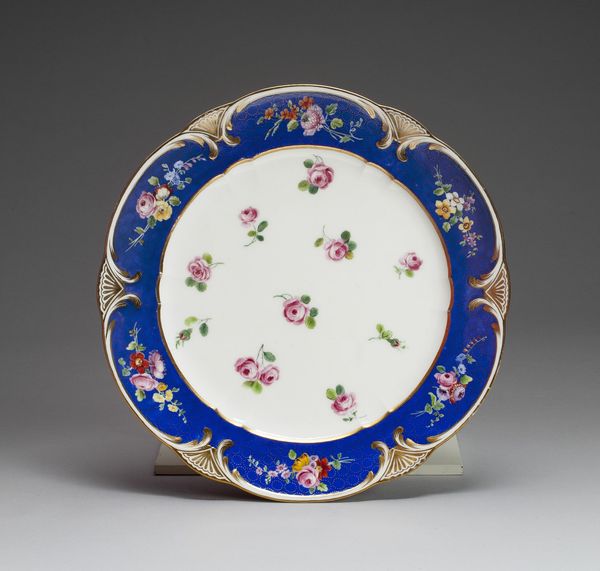
Plate from the Charlotte Louise Service 1774
0:00
0:00
Dimensions: Diam. 24.5 cm (9 5/8 in.)
Copyright: Public Domain
Curator: Before us, we have a porcelain plate dating back to 1774, a component of the Charlotte Louise Service crafted at the Manufacture nationale de Sèvres. Editor: It's impossibly delicate. It evokes that feeling of spring afternoons, a sort of playful formality where you’re almost too afraid to breathe. I get the sense this was crafted during a time when luxury was meant to delight, maybe even a bit irreverently. Curator: The plate’s Rococo styling presents an intricate play of miniature floral arrangements, whimsical vignettes of cherubic figures, all framed by garlands and a deep blue border, accentuated with gold. Central to the plate is what seems to be a monogram crafted with more painted blooms. Editor: The symmetry is almost too perfect, wouldn't you agree? Like each detail has been painstakingly considered to produce something that seems light and airy. But, tell me, who was Charlotte Louise? Why commission something like this? Curator: Commissioned pieces such as these were more than dinnerware; they symbolized power and refined taste, essential commodities of the French aristocracy. Research suggests this was likely produced for Charlotte Louise de Rohan-Soubise, a member of one of France's most influential noble families. The plate embodies a fusion of art, craft, and aristocratic identity. Editor: The level of detail seems unreal. I imagine hours upon hours spent just on one of those tiny baskets filled with painted flowers, it must have been so meticulous and labor intensive. I wonder, how would it feel to actually use such a luxurious piece, would the experience transcend eating? Curator: Exactly, and that very sensorial richness is central to understanding Rococo aesthetics and its cultural implications during the eighteenth century. These kinds of luxury items aimed to overwhelm and delight the senses, establishing one’s place in society through aesthetic experiences. Editor: I find it sad that a piece so beautifully designed could be used as an instrument to further mark class distinction. Thinking about this plate outside the vacuum of pure artistry makes me consider art's complicity, however unintentional, with societal power structures. Curator: True, it's a poignant reminder of art's role within society's hierarchies. However, viewing this Sèvres plate now, it provides us not just with an aesthetic encounter, but also invites reflections about history and privilege. Editor: It seems, indeed, like we've encountered more than just pretty porcelain today.
Comments
No comments
Be the first to comment and join the conversation on the ultimate creative platform.
